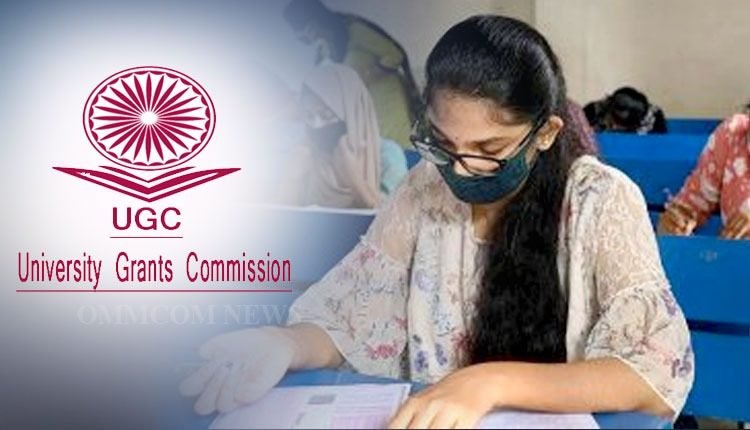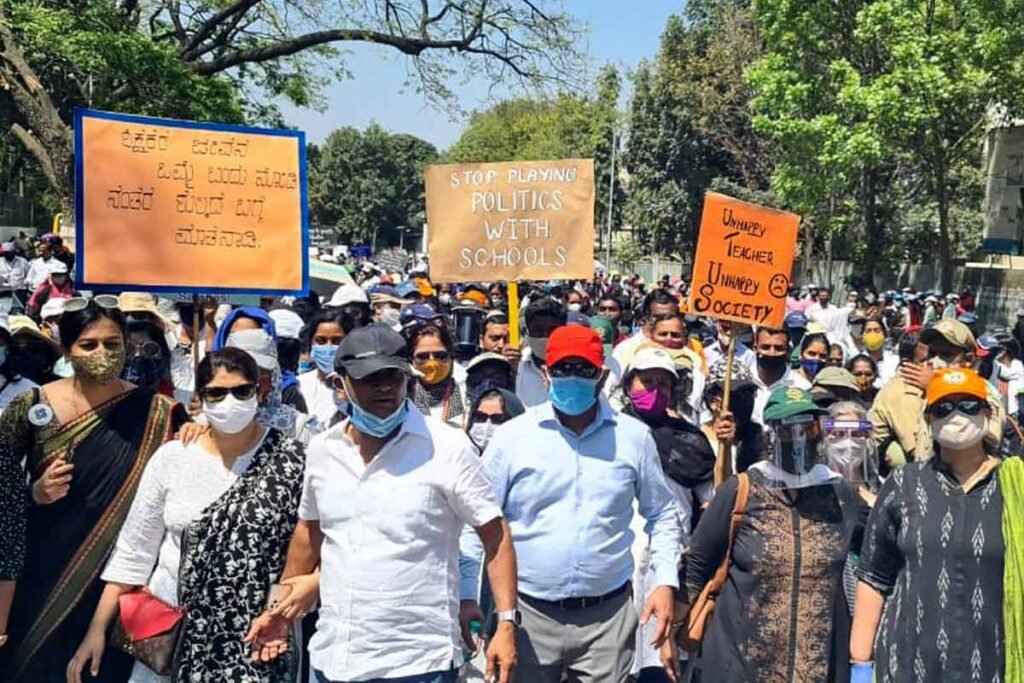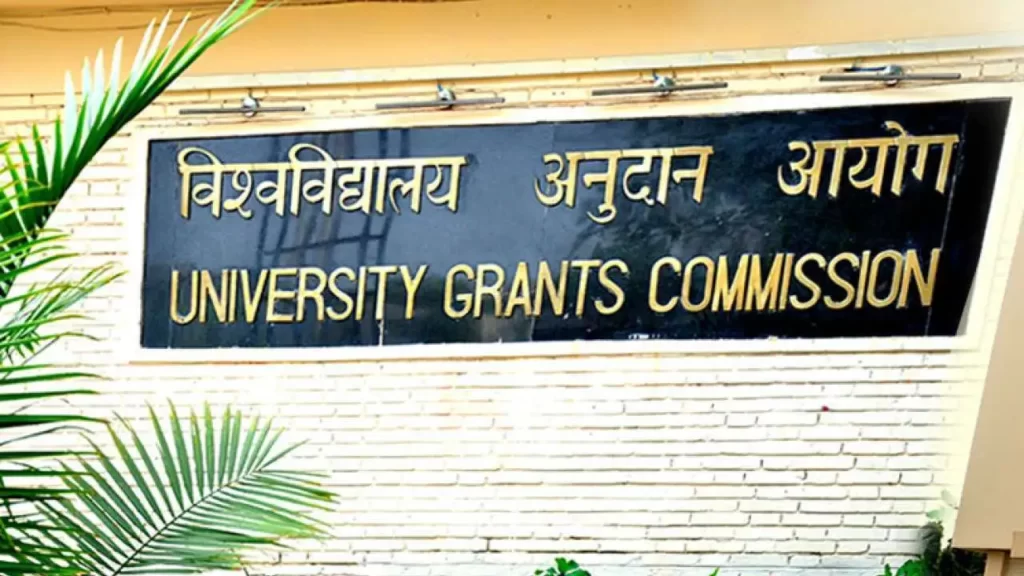ArdorComm Media Group (A Media Start-up) hosted the ‘HIGHER EDUCATION and EDTECH CONCLAVE & AWARDS 2022’ as the 1st & Biggest ‘Physical Event’ in Pune, Maharashtra on 6th May 2022 (Friday). The Summit’s theme focused on ‘Empowering Higher Education community with Ed-Tech collaboration to voyage from Education 4.0 to Education 5.0’. This Knowledge forum invited policymakers, higher education leaders, innovators, and Edtech experts to share their experiences, ideas, and accomplishments that have helped the growth of the education community during the tough times of the COVID-19 pandemic. More than 250 attendees from over 135 institutions from Maharashtra & rest of India united under one roof for a mission to co-create, co-learn, and collaborate for Innovation & growth of the Higher Education sector. Thus, Featuring Maharashtra as a ‘Higher Education & EdTech Hub’ of the Country. The conclave witnessed who’s who from government, universities, colleges, engineering institutes, B-schools and skill institutions, and experts from corporate, EdTech companies & education startups. Deliberating, showcasing & presenting best & next practices in higher, skill & technical education. Chandan Anand, Founder, CEO & Group Editor of ArdorComm Media Group, emphasized on the event theme saying, ‘’The goal of Education 5.0 is to transform the current educational system into one that is centered on action and outcomes. Despite repeated attempts to offer proper training, evaluation, and related assistance, the actual figures for employable graduates each year are alarming. As a result, the gap between industry demands versus employable-skilled human capital continues to widen. The transformation shift from Education 4.0 to Education 5.0 is about co-creating the socio-digital ecosystem which could ease the dynamics of teaching-learning-skilling-employing youth (Gen-Z & Millennials).” Coursera for Campus participated as the ‘Presenting partner’ of ‘Ardorcomm- Higher Education and EdTech Conclave & Awards 2022’; Anthology as the Powered by Partner; Serosoft (Academia ERP) Solutions Pvt. Ltd. as the ERP partner; D2L as Ed-tech partner; ELSA as Training and Placement partner. The Associate partners of the event were Eduvacancy, Financepeer, Intercell – Virtual Mentor Network, LeadSquared, MasterSoft, MONET Live, SAS and Wiley. The Knowledge partner of the event was Savitribai Phule Pune University and the University partners were Tilak Maharashtra Vidyapeeth and Centre for Open & Digital Education – Hindustan Online. The Institute partner of the event was ASM Group of Institutes, Pune. The special guests, eminent speakers, experts, academicians & educators from universities, engineering institutions, B-schools, EdTech & education startups who graced the event with their presence at ‘ArdorComm- Higher Education and EdTech Conclave, Pune’ were: Dr. Ganesh Natarajan, Chairman, Honeywell Automation Chairman & Founder, 5F World Director, SBI; Dr. Parin Somani, International Motivational Speaker & Academic Scholar Author, Humanitarian and Philanthropist, TEDx Speaker; Chetan S Wakalkar, Managing Trustee & Group Director, Indira Group of Institutes, Pune; Vivek Iyer, Vice President – Asia Pacific. Anthology; Dulles Krishnan, Managing Director Enterprise – India and ANZ, Coursera; Sanjay Padode, Founding President and Chancellor, Vijaybhoomi University; Chairman, JAGSOM; Prof. (Dr.) G.K.Shirude, Vice-Chancellor, Sri Balaji University; Pune; Dr. Sandeep Pachpande, Chairman, ASM Group of Institutes, Pune; Vibha Mahajan, Senior Director, Wiley; Vaibhav Anand, Country Manager – India, ELSA Corporation; Prof. (Dr.) M. M. Salunkhe, Vice-Chancellor, Bharati Vidyapeeth (Deemed to be University); Dr. Siddharth Jabade, Vice-Chancellor, Vishwakarma University, Pune; Dr. Sayalee Gankar, Vice-Chancellor, D Y Patil University, Ambi, Pune; Dr. Eknath B. Khedkar, Vice President, D Y Patil Group & Pro-Chancellor, Ajeenkya D Y Patil University, Pune (ADYP); Dr. Adya Sharma, Director, Symbiosis Centre for Management Studies, Pune; Gaurav Somani, President Sales, Mastersoft; Maunish Pandya, Head- Business Development, Serosoft (Academia ERP); Ashwani Kumar Singh, Head- Branding & Communications, Serosoft (Academia ERP); Dr. Apoorva Palkar, Director- Innovation Incubation & Linkage, Savitribai Phule Pune University; Dr. Sachin S. Vernekar, Dean – FMS Bharati Vidyapeeth (Deemed to be University), Director- IMED, Pune; Dr. P. Vatsalaswamy, Director IQAC, Dr. D. Y. Patil Vidyapeeth, Pune; Jitendra Patil, Campus Director, Universal College of Engineering; Dr. Sandip Sane, Director, IBMR, ASM Group of Institutes, Pune; Prof. Laxman Kumar Tripathy, Director, SaiBalaji International Institute of Management Sciences; Karun Dube, Head -Business, Intercell; Rakesh Malaviya, Chief Operating Officer, Head Monet-India; Anand Vats, Manager, Monet India Design Center; Murali Krishna, VP, Sales, LeadSquared; Dr. Sanjay Jha, Director (Liberal Arts), Amity University; Dr. Safia Farooqui, Director, Dr. D.Y. Patil Vidyapeeth, Centre for Online Learning; Dr. Ganesh Rao, Director, Pune Business School; Dr. Debjani Banerjee, Associate Dean & Accreditation Consultant, Member Secretary, IQAC VES Business School; Dr.Tejas B. Vyas, Director, Global Business School, Hubli; Dr. Ashok Agrawal, Principal, Kannada Sangha Pune’s Kaveri College of Arts, Science and Commerce, Ganeshnagar, Pune; Dr. Indu Sharma, Director IAQC, MITCON Institute of Management; Prof. Dr. C.M. Sedani, Principal, Padambhushan Vasantdada Patil Institute of Technology, Pune and many more. Ardorcomm Media – Higher Education Awards & EdTech Awards aimed to acknowledge those individuals, educational institutions, and Ed-tech companies that have played a key role in transforming the teaching, learning and employability outcomes. The prestigious award recognized & honoured innovators, trendsetters, and educators in the higher education sector. Key Discussion Points of ‘ArdorComm – Higher Education and EdTech Conclave & Awards 2022’: Education 4.0 to 5.0: A transformational shift in the education system. Reinventing higher education through the ‘PHYGITAL’ mode of learning. How can the setting up of ‘Digital Universities’ as per Union Budget 2022 help in getting world-class education? Can Distance Learning and MOOCs play a pivotal role in Higher Education in India? Skill development and multidisciplinary approach: A robust education eco-system. How the new age technologies like AI, ML, IoT are changing India’s higher education landscape? Key Highlights of ‘ArdorComm – Higher Education and Edtech Conclave & Awards 2022’: Days: 1 Panel Sessions: 5 Industry Presentations: 7 Speakers: 45+ Delegates & Attendees: 250+ Higher Education Institutes (Universities + Engineering Institutes + B-Schools): 135+ Education Corporate & EdTech Startups: 25+ ‘Ardorcomm- Higher Education and EdTech Conclave & Awards 2022’ was an important knowledge-sharing platform of the education community that cared deeply about imparting education and making teaching-learning process smoother and accessible to all. It highlighted a glimpse of the higher education fraternity comprising India’s top








